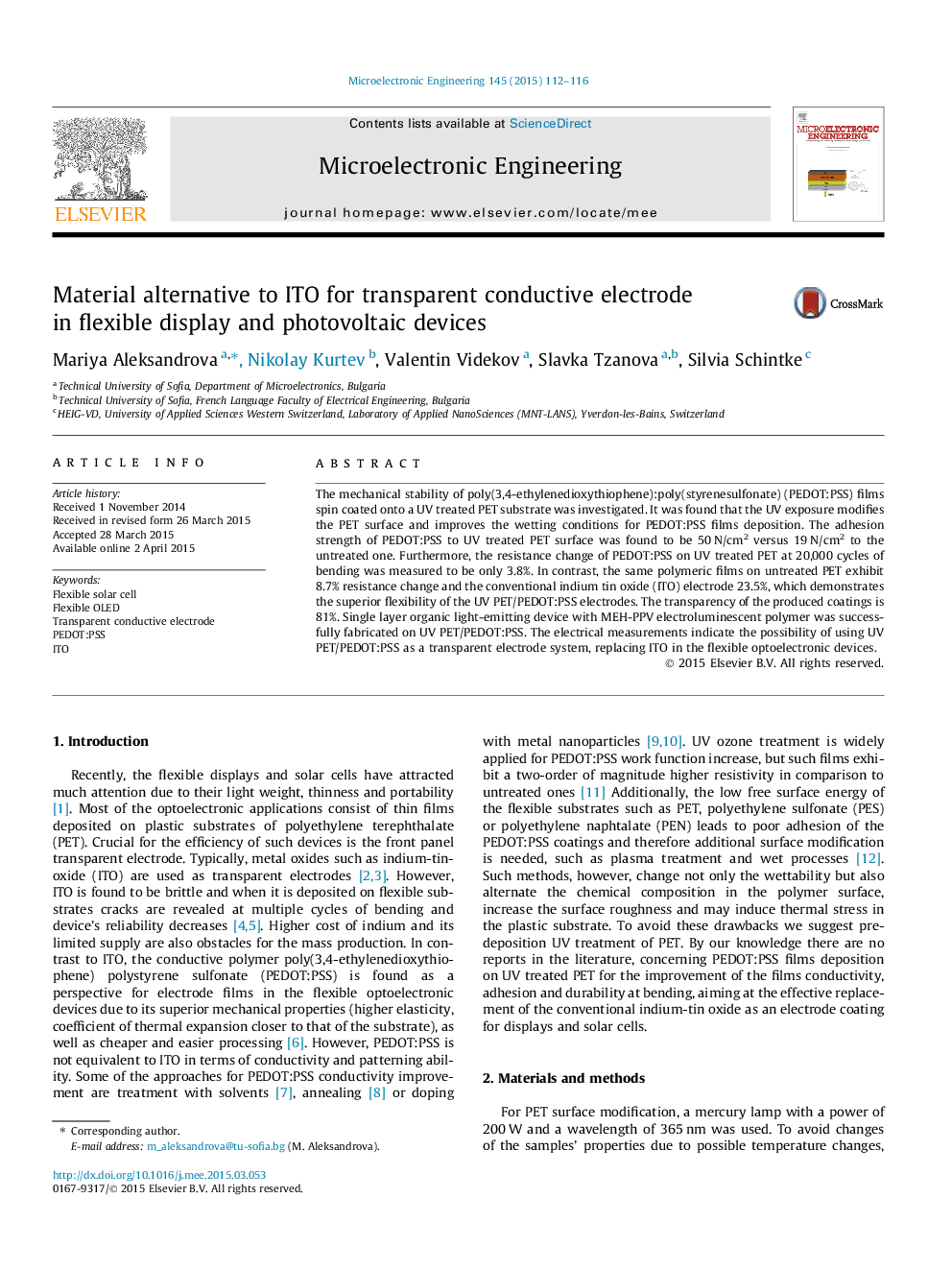| کد مقاله | کد نشریه | سال انتشار | مقاله انگلیسی | نسخه تمام متن |
|---|---|---|---|---|
| 539148 | 1450336 | 2015 | 5 صفحه PDF | دانلود رایگان |

• UV treatment of PET substrates, improving the adhesion of PEDOT:PSS anodes in OLED.
• Improvement of PEDOT:PSS conductivity and bending durability without film doping.
• Negligible resistance and transparency change of PEDOT:PSS films at multiple bends.
• Replacement of the conventional ITO electrode by PEDOT:PSS on UV treated PET.
• Cheap approach for PET surface modification and OLED performance improvement.
The mechanical stability of poly(3,4-ethylenedioxythiophene):poly(styrenesulfonate) (PEDOT:PSS) films spin coated onto a UV treated PET substrate was investigated. It was found that the UV exposure modifies the PET surface and improves the wetting conditions for PEDOT:PSS films deposition. The adhesion strength of PEDOT:PSS to UV treated PET surface was found to be 50 N/cm2 versus 19 N/cm2 to the untreated one. Furthermore, the resistance change of PEDOT:PSS on UV treated PET at 20,000 cycles of bending was measured to be only 3.8%. In contrast, the same polymeric films on untreated PET exhibit 8.7% resistance change and the conventional indium tin oxide (ITO) electrode 23.5%, which demonstrates the superior flexibility of the UV PET/PEDOT:PSS electrodes. The transparency of the produced coatings is 81%. Single layer organic light-emitting device with MEH-PPV electroluminescent polymer was successfully fabricated on UV PET/PEDOT:PSS. The electrical measurements indicate the possibility of using UV PET/PEDOT:PSS as a transparent electrode system, replacing ITO in the flexible optoelectronic devices.
Figure optionsDownload as PowerPoint slide
Journal: Microelectronic Engineering - Volume 145, 1 September 2015, Pages 112–116